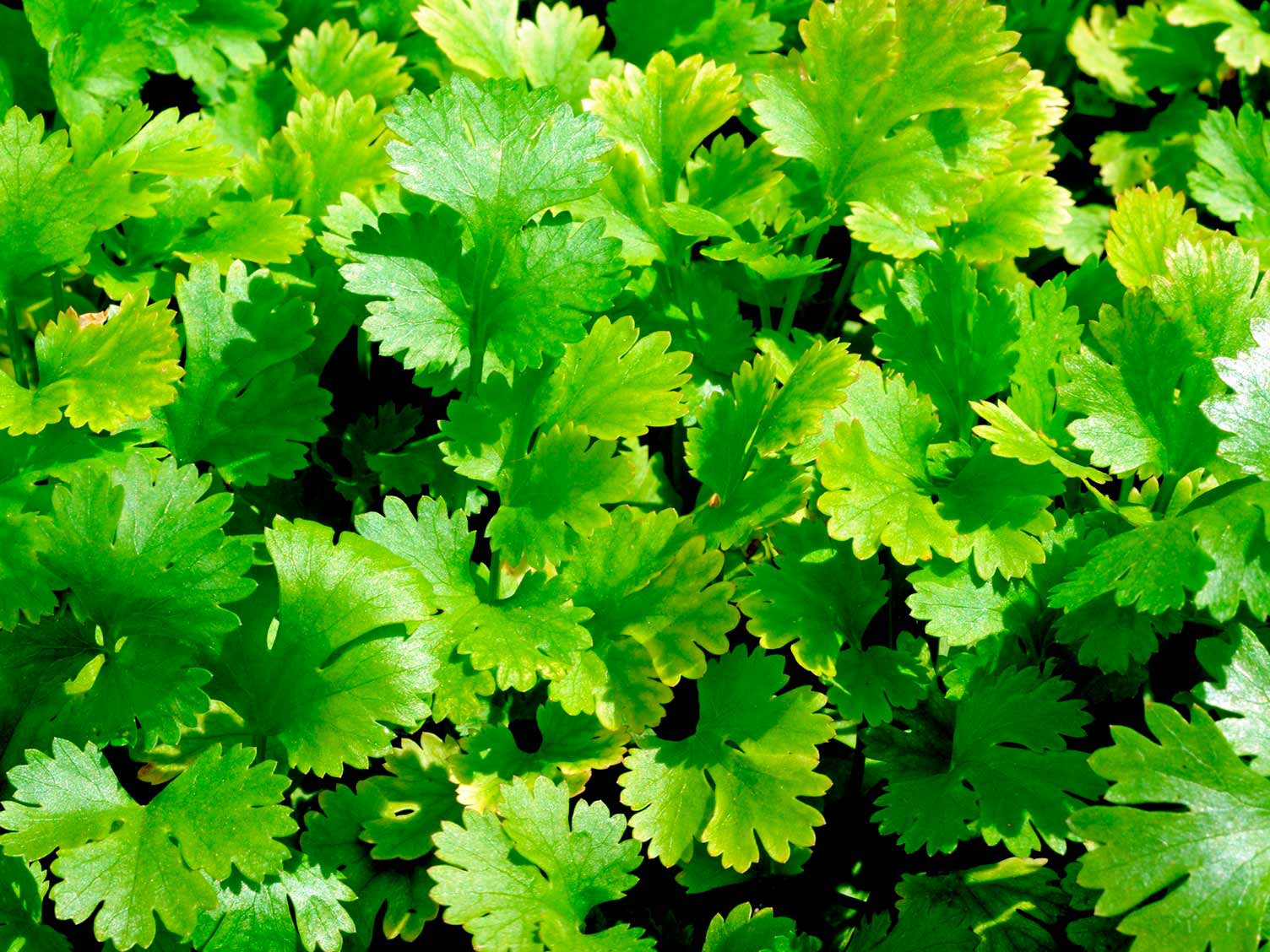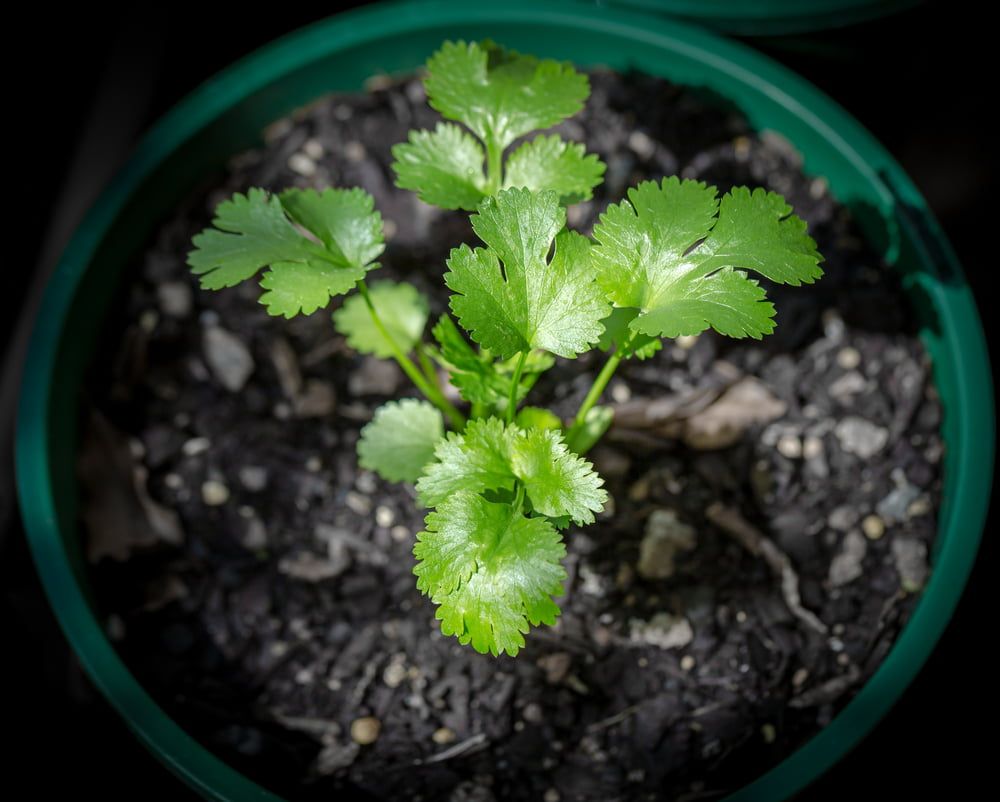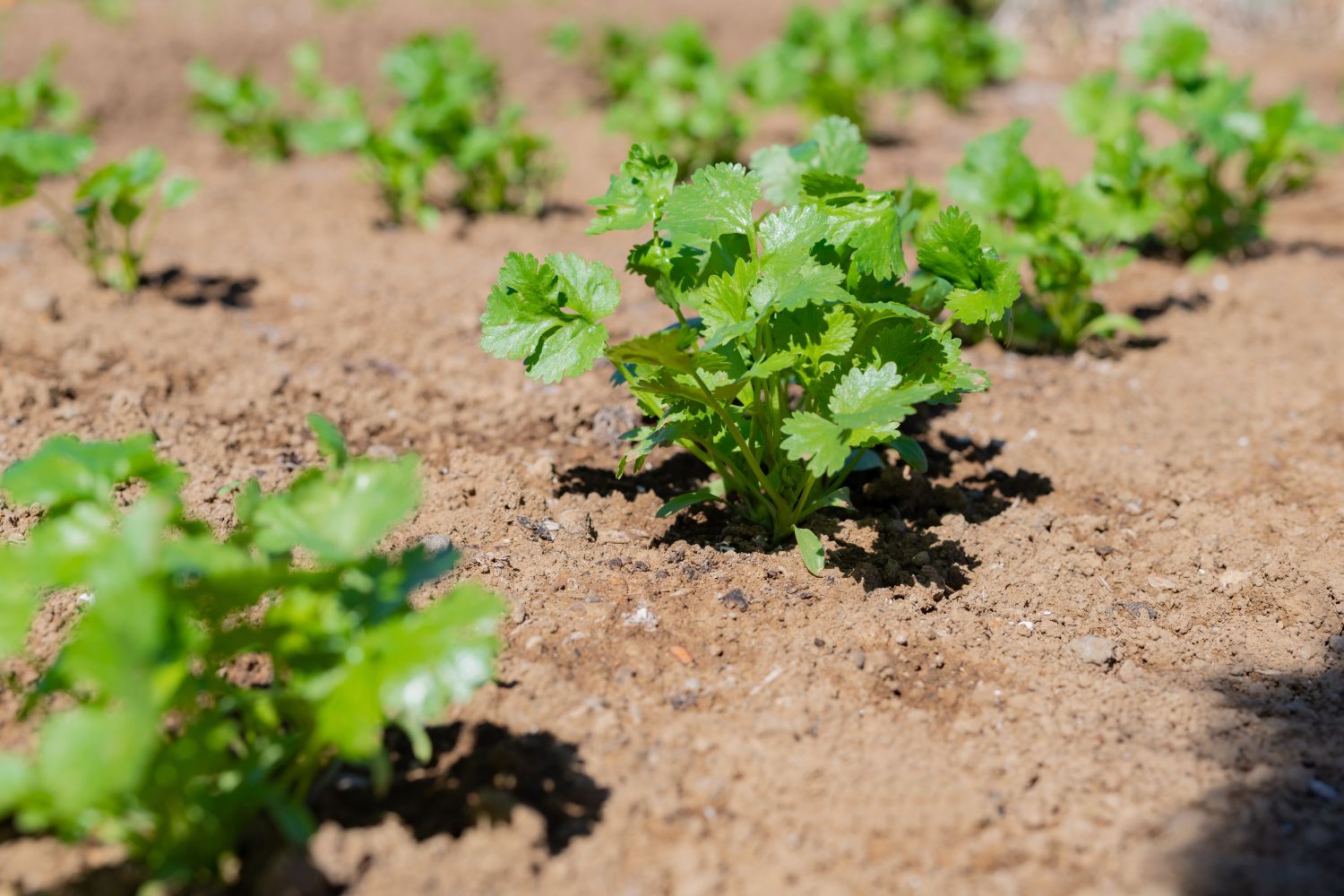Unlocking the Secrets of Indoor Coriander Growth
Growing coriander indoors offers numerous benefits, including year-round access to fresh herbs, improved air quality, and a touch of natural beauty to any room. Coriander, also known as cilantro, is a fast-growing, versatile herb commonly used in cooking, particularly in Mexican, Indian, and Asian cuisine. Its medicinal properties, including anti-inflammatory and antioxidant effects, make it a popular choice for health-conscious individuals. With the right conditions, coriander can thrive indoors, providing a continuous harvest of fresh leaves and seeds.
Indoor growing conditions can be optimized for coriander cultivation by replicating its natural environment. Coriander typically grows in well-draining soil and partial shade, making it an ideal candidate for indoor containers. By providing the right balance of light, temperature, and water, indoor gardeners can encourage healthy growth and prevent common issues like bolting and root rot. In this article, we will explore the steps to successfully grow coriander indoors, from selecting the right variety to harvesting and preserving the crop.
When it comes to growing coriander indoors, understanding the specific needs of the plant is crucial. Coriander requires a consistent temperature between 65°F to 75°F (18°C to 24°C), making it an ideal choice for indoor growing. Additionally, coriander needs adequate light, but direct sunlight can cause the plant to bolt. By using grow lights or placing the plant near a sunny window, indoor gardeners can provide the necessary light for healthy growth. With the right conditions and care, coriander can be grown indoors year-round, providing a continuous harvest of fresh leaves and seeds.
Choosing the Right Variety: Selecting Coriander Seeds for Indoor Growth
When it comes to growing coriander indoors, selecting the right variety is crucial for success. Coriander seeds come in different types, each with its unique characteristics, growth habits, and flavor profiles. For indoor growth, it’s essential to choose varieties that are compact, slow-bolting, and disease-resistant. Slow-bolting varieties, such as ‘Santo’ or ‘Jantar’, are ideal for indoor growth as they take longer to flower and produce seeds, allowing for a longer harvest period.
Fast-growing varieties, such as ‘Calypso’ or ‘Leisure’, are also suitable for indoor growth, but they may require more frequent pruning to encourage bushy growth and prevent flowering. When selecting coriander seeds for indoor growth, consider factors such as climate, light, and temperature. If you live in a cool and temperate climate, choose varieties that are tolerant of cooler temperatures. If you have limited light, choose varieties that are compact and can thrive in partial shade.
Some popular coriander seed varieties for indoor growth include ‘Cilantro’, ‘Mexican Coriander’, and ‘Indian Coriander’. These varieties are known for their fast growth, high yields, and resistance to diseases. When purchasing coriander seeds, make sure to check the packaging for specific instructions on sowing, growing, and harvesting. By choosing the right variety and following proper growing conditions, you can successfully grow coriander indoors and enjoy a bountiful harvest of fresh leaves and seeds.
In addition to selecting the right variety, it’s also essential to consider the quality of the seeds. Look for seeds that are fresh, plump, and have a high germination rate. Avoid seeds that are old, stale, or have a low germination rate, as they may not produce healthy and vigorous plants. By choosing high-quality seeds and following proper growing conditions, you can ensure a successful and productive indoor coriander crop.
Preparing the Perfect Soil: A Guide to Coriander-Friendly Potting Mixes
When it comes to growing coriander indoors, the right potting mix can make all the difference. Coriander requires a well-draining soil that is rich in organic matter and has a slightly acidic pH. A potting mix specifically designed for indoor herb growth is ideal, as it will provide the necessary nutrients and drainage for healthy coriander growth.
To create a DIY coriander-friendly potting mix, combine the following ingredients:
- 2 parts peat moss or coconut coir
- 1 part perlite or vermiculite
- 1 part compost or worm casting
- 1/2 part balanced fertilizer (10-10-10)
Mix the ingredients together until well combined, and adjust the pH to around 6.0-6.5. This potting mix will provide excellent drainage, aeration, and nutrient availability for your coriander plants.
Alternatively, you can use commercial potting mixes specifically designed for indoor herb growth. Look for mixes that contain ingredients such as peat moss, perlite, and compost, and have a slightly acidic pH. Some popular commercial potting mixes for indoor herb growth include Miracle-Gro Indoor Potting Mix and Espoma Organic Indoor Potting Mix.
When using a commercial potting mix, be sure to follow the instructions on the label for proper use. It’s also a good idea to add a balanced fertilizer to the potting mix to provide additional nutrients for your coriander plants.
By using a well-draining potting mix specifically designed for indoor herb growth, you can provide your coriander plants with the necessary conditions for healthy growth and maximize your chances of success when growing coriander indoors.
Providing Optimal Growing Conditions: Lighting, Temperature, and Watering
When it comes to growing coriander indoors, providing optimal growing conditions is crucial for healthy growth and maximum yields. Coriander requires bright, indirect light to photosynthesize and grow. Placing the plants near a sunny window or using grow lights can provide the necessary light for indoor coriander growth.
For optimal growth, coriander prefers daytime temperatures between 65-75°F (18-24°C) and nighttime temperatures around 55-65°F (13-18°C). Avoid placing the plants near heating or cooling vents, fireplaces, or drafty windows, as this can cause temperature fluctuations that may stress the plants.
Watering is also critical for indoor coriander growth. Coriander prefers well-draining soil and should be watered when the top inch of soil feels dry to the touch. Avoid overwatering, as this can lead to root rot and other problems. Water the plants in the morning, so the pot has a chance to dry out slightly before nightfall.
Humidity is another important factor to consider when growing coriander indoors. Coriander prefers a relatively low humidity environment, around 40-50%. To maintain optimal humidity levels, you can use a humidifier or group plants together to create a microclimate.
In addition to these factors, air circulation is also important for healthy coriander growth. Make sure to provide good air circulation around the plants by keeping them at least 6-8 inches away from any walls or other objects.
By providing optimal growing conditions, including bright light, consistent temperatures, and proper watering, you can help your coriander plants thrive indoors and enjoy a bountiful harvest of fresh leaves and seeds.
Some popular options for grow lights include LED grow lights, fluorescent grow lights, and HPS (High Pressure Sodium) grow lights. When choosing a grow light, consider the size of your growing area, the type of plants you are growing, and the amount of light they require.
By following these tips and providing optimal growing conditions, you can successfully grow coriander indoors and enjoy the many benefits of this versatile and delicious herb.
How to Sow Coriander Seeds Indoors: A Step-by-Step Sowing Guide
Sowing coriander seeds indoors is a straightforward process that requires some basic preparation and attention to detail. To ensure optimal germination and growth, follow these steps:
Step 1: Prepare the Soil
Before sowing the seeds, make sure the potting mix is moist but not waterlogged. If the mix is too dry, water it gently but thoroughly. If the mix is too wet, let it dry out for a few hours before sowing.
Step 2: Sow the Seeds
Sow the coriander seeds about 1/4 inch deep and 1-2 inches apart in the potting mix. Cover the seeds with a thin layer of the mix. Water the seeds gently but thoroughly.
Step 3: Provide Adequate Moisture
Keep the potting mix consistently moist but not waterlogged. Water the seeds when the top inch of the mix feels dry to the touch. Avoid getting water on the leaves or crown of the plant to prevent rot and other problems.
Step 4: Provide Warmth and Light
Place the pot in a warm location with temperatures between 65-75°F (18-24°C). Provide bright, indirect light for 12-14 hours a day. Avoid direct sunlight, which can cause the seeds to bolt or become leggy.
Step 5: Maintain Humidity
Keep the humidity level around 40-50% to promote healthy germination and growth. You can cover the pot with a clear plastic bag or a cloche to maintain humidity and warmth.
By following these steps and providing optimal growing conditions, you can successfully sow coriander seeds indoors and enjoy a bountiful harvest of fresh leaves and seeds.
Some additional tips to keep in mind when sowing coriander seeds indoors include:
- Use fresh seeds for optimal germination rates.
- Sow seeds in a pot that is at least 6-8 inches deep to accommodate the taproot.
- Avoid overwatering, which can lead to rot and other problems.
- Keep the pot away from drafts and extreme temperatures.
Coriander Care and Maintenance: Pruning, Fertilizing, and Pest Control
Once your coriander plants are established, regular care and maintenance are essential to promote healthy growth and prevent common problems. Pruning, fertilizing, and pest control are critical components of coriander care, and can help you maximize your indoor crop.
Pruning is an essential part of coriander care, as it helps to promote bushy growth, prevent bolting, and encourage root development. Pinch off flower buds as they form to direct the plant’s energy towards leaf growth. Remove any weak or spindly stems to promote air circulation and prevent disease.
Fertilizing is also important for coriander growth, as it provides essential nutrients for healthy development. Use a balanced, water-soluble fertilizer (10-10-10) at half the recommended strength. Apply the fertilizer once a week, taking care not to over-fertilize, which can damage the roots and lead to nutrient deficiencies.
Pest control is another critical aspect of coriander care, as indoor plants can be susceptible to pests such as spider mites, mealybugs, and aphids. Inspect your plants regularly for signs of pests, and use organic pest control methods whenever possible. Neem oil, insecticidal soap, and horticultural oil are effective and safe options for controlling pests on coriander plants.
Some additional tips for coriander care and maintenance include:
- Monitor temperature and humidity levels to prevent stress and promote healthy growth.
- Provide adequate air circulation to prevent disease and promote healthy growth.
- Use a trellis or stake to support tall coriander plants and prevent them from toppling over.
- Keep the potting mix consistently moist but not waterlogged to prevent root rot and other problems.
By following these tips and providing regular care and maintenance, you can help your coriander plants thrive indoors and enjoy a bountiful harvest of fresh leaves and seeds.
Common Challenges and Solutions: Troubleshooting Indoor Coriander Growth
While growing coriander indoors can be a rewarding experience, there are some common challenges that may arise. By understanding these challenges and knowing how to overcome them, you can ensure a healthy and productive indoor coriander crop.
Bolting is one of the most common problems faced by indoor coriander growers. Bolting occurs when the plant produces a flowering stem, which can lead to a decrease in leaf production and flavor. To prevent bolting, make sure to provide your coriander plants with enough light, maintain consistent temperatures, and avoid overwatering.
Pests are another common challenge faced by indoor coriander growers. Aphids, spider mites, and mealybugs are some of the most common pests that can infest coriander plants. To control pests, use organic pest control methods such as neem oil, insecticidal soap, and horticultural oil.
Diseases are also a common problem faced by indoor coriander growers. Root rot, leaf spot, and powdery mildew are some of the most common diseases that can affect coriander plants. To prevent diseases, make sure to provide your coriander plants with good air circulation, maintain consistent temperatures, and avoid overwatering.
Some additional tips for troubleshooting indoor coriander growth include:
- Monitor your plants regularly for signs of pests, diseases, and nutrient deficiencies.
- Adjust your growing conditions as needed to prevent common problems.
- Use organic pest control methods and fungicides to control pests and diseases.
- Provide your coriander plants with enough light, water, and nutrients to promote healthy growth.
By following these tips and being aware of the common challenges faced by indoor coriander growers, you can ensure a healthy and productive indoor coriander crop.
Harvesting and Preserving Coriander: Maximizing Your Indoor Crop
Once your coriander plants have reached maturity, it’s time to harvest and preserve the leaves and seeds. Harvesting coriander is a straightforward process that requires some basic knowledge of the plant’s growth habits.
Coriander leaves can be harvested at any time, but they are typically at their best flavor and aroma when the plant is around 6-8 inches tall. Simply snip off the leaves with scissors or pinch them off with your fingers, leaving about 1-2 inches of stem intact.
Coriander seeds can be harvested when the plant has finished flowering and the seeds have turned brown. Cut off the seed heads and dry them further by spreading them out in a single layer on a paper bag or paper towels.
Preserving coriander is an important step in maximizing your indoor crop. There are several ways to preserve coriander, including drying, freezing, and refrigerating.
Drying is a popular method for preserving coriander, as it helps to preserve the flavor and aroma of the leaves and seeds. To dry coriander, simply tie the leaves or seed heads in small bunches and hang them upside down in a warm, dry place.
Freezing is another effective method for preserving coriander. Simply chop the leaves or seeds and place them in an airtight container or freezer bag. Frozen coriander can be used in a variety of dishes, including soups, stews, and salads.
Refrigerating is a great way to keep coriander fresh for a longer period. Simply place the leaves or seeds in an airtight container and store them in the refrigerator. Refrigerated coriander can be used in a variety of dishes, including salads, sandwiches, and sauces.
Some additional tips for harvesting and preserving coriander include:
- Harvest coriander leaves and seeds regularly to encourage the plant to produce more.
- Use scissors or pinch off the leaves and seeds to avoid damaging the plant.
- Dry or freeze coriander as soon as possible after harvesting to preserve the flavor and aroma.
- Store preserved coriander in a cool, dry place to maintain its flavor and aroma.
By following these tips and techniques, you can maximize your indoor coriander crop and enjoy the fresh flavor and aroma of this versatile herb all year round.








